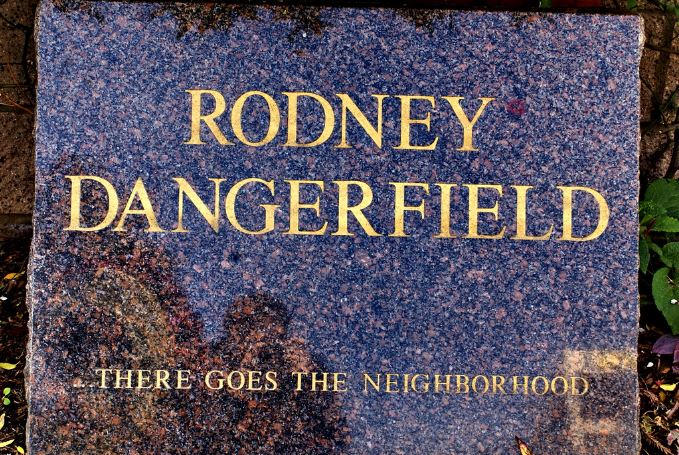Rodney Dangerfield cause of death: explore his health complications, lifelong stress, and how comedic life may have shaped his heart issues.
Rodney Dangerfield laughed millions with its signature line “I get no respect”, but a body suffered from stress, hidden pain and cumulative health damage behind a smile. When he died in 2004, the official cause was complications from heart valve surgery, but it was just a tipping point. His story is repeated by many mythological artists, who struggled with health conflicts behind the scenes and said how the exhibition, emotional stress and tireless pressure from the medical burden were converging, especially in the comedian. In this deep dive, we will find out properly how Rodney Dangerfield dies, breaks up the health history and find out a broad psychological-brain connection: How does it affect your heart throughout life under comic spotlight?
What You'll Discover:
The Medical Story: Really Killed Rodney Dangerfield
Heart Valve Surgery and Complications After Upwards
The approximate cause of Dangerfield’s death was complications after heart valve replacement surgery. On August 25, 2004, he performed a surgical process in UCLA to replace a defective heart valve.
But that process did not happen fine. In the wake:
- After surgery, he had a small stroke, which further damaged neurological and vascular stability.
- Infectious and gastric complications occurred, the recovery was interrupted.
- He slipped in a coma immediately after that.
- He died on October 5, 2004, after the complexities of the operation overwhelmed him.
While the operation was aimed at fixing a structural problem in the heart, the cerebrovascular humiliation, infection, organ voltage and coma fosus falls the end.
Burble Status and Pre-Existing Damage
Pre-Cardiac Event
In November 2001, on his 80th anniversary, Dangerfield had a light heart attack, and allegedly appeared at the Tonite Show.
He also tolerated aneurysm operations and brain surgery during his life, in the work of restoring or stabilizing blood flow.
In April 2003, he did brain surgery to improve cerebral blood flow as a first step before planning the heart ventilation.
When he entered the surgical theater in 2004, his vascular system had already performed several attacks: stroke, aneurysm, cerebral intervention and myocardial tension.
His vascular wood was not old; It was defeated, repaired and patched. It creates systemic flexibility, the ability to cope with surgical stress, very weak.
Age, Wear and Tears and Latent Degeneration
At the age of 82, Rodney Dangerfield was even before the threshold, where the regenerative reserves are reduced. Tissue repair is slow; The arteries are founders; Comorbidities accumulate. Even a healthy 82 year old, there is a risk in open heart surgery. Add the decades with the high cortisol, vessel, lack of potential sleep and emotional anxiety, and tires are heavily stacked.
As some biographical notes, he was also on 137 tablets daily, the color coded by function, to indicate its countless inner conditions, old stress.
So surgery was a last battlefield in a war that his body had teased for years.
Psychological and Stress Factor: A Comedian Hidden Health Customs
Emotional Ground: Depression, Trauma and Identity
The biography of Rodney Dangerfield reveals childhood characterized by neglect, abandonment and emotional absence:
- The father left, and his mother was emotionally gone.
- From an early age, he used humor as a shield and language to join a world where he felt invisible.
- Depression was a regular partner. He allegedly led a sadness under laughter.
- He sought psychiatry support and rely on heavy medications to stabilize mood swings.
Performing internal stress, inner unrest as an external shell, probably shocked its autonomic nervous system for decades.
Chronic Stress, Cortisol and Cardiovascular Injury
From decades of performance concern, late evening plan, travel, irregular sleep, emotional fluctuations and from continuous pressure to top each joke, his stress system was never free to relax.
The sympathy is known for long-term activation of the nervous system and elevated cortisol levels:
- High blood pressure
- Acidherosclerosis
- Endothelial dysfunction
- Arrhythmia
- Reduction
In short: Continuous “on” mode is toxic to the cardiovascular system. For someone like Dangerfield, the load was very great. Every show, every joke, each tour was a micro hum.
How Does Comedians Push Their Body
Think about this: A punchline requires adrenaline, voice modulation, pace, emotional highlights and feedback loops for the public for land. For decades, Dangerfield’s body was asked to switch between states, cool backstage, electrified on stage, later, continuously drought. Such fluctuation prevents physical recovery, especially at an older age.
In addition, comedians travel often, eat unhealthy foods on the road, sleep irregularly and drink notice or drink nerves or drink smoke (even if they are light). This lifestyle stress is compounds over time.
So there is a metabolic cost behind the jokes. Each laughter came from the cost of stabilization in its inner milestone.
Anatomy of a Decline: Chronology of Medical Abuse
Phase 1: Inpatient Year and Basic Stress
From the youth caused Dangerfield emotional injury. To perform became existence, not just art. Such early trauma can prime HPA (hypothalamic-hypophyse-incompiple) axis for hypersensitivity to stress. For decades it produces inflammation of the low-grain, immune relaxation and vascular delicacy.
Phase 2: Mid-Year – Tournament, Famous, Health Activity
As his fame in the 1970s and 1980s, it accelerated. He visited, appeared on TV, made movies, all a mile of performance pressure. Sleep became irregular; The journey is often done; External confirmation weighed more heavy; Personal life strains mounted.
He ended the comedy under pressure, but medically, which contributed to progressive vascular “wear and tears”, arteries, microvascular damage, possible silent icy episodes.
Phase 3: To Go into the Behavior of the Sight in Visit
As long as he was in the 70s and early 1980s, the possibility of cumulative damage was revealed:
- Heart artery
- Valve generation (possibly through calcification or rheumatic changes)
- Lack of organ systems
- Pickle increased for microstrox, aneurysm and neurovascular appointment
He had already undergone anourism surgery and brain surgery to that point.
Phase 4: Final Campaign, Pre-OP and Surgery
In April 2003, he performed brain surgery to improve the blood flow in preparation for the valve replacement. This shows that the vascular agreement reached a level where cerebral spraying was at risk. He did not enter his final operation from the baseline of stability, he entered it with a weak, disturbed system.
Valve replacement in August 2004 was important, but dangerous. The combination of stroke, infection, abdominal complications and coma was like a damino waterfall, one failure got another trigger until the recovery was unnecessary.
What Does It Teach Us About Humor Lifestyle and Heart Health
Laughter and Inner Pain Contradiction
Comedy often suffers internal disorders. Comedian joke during breakdown; They convert grief into a punchline. This does not mean that they do not feel, often they feel more intense.
Living with chronic emotional stress when performing external happiness is like building a house when moving the sand. Finally, cracks.
Stress is Cumulative and Quiet
Most of the main disadvantage of malignant breakdown occurs gradually, invisible. Hypertension, quiet ischemia, endothelial dysfunction, can run without all symptoms before an acute humiliation (such as surgery) pushes the system beyond repair.
Dangerfield’s light heart attack in 2001 may be a sign of a warning. But in the restlessness of the show life he cannot quite stop or rebuild.
Performance Career is Worth Inspection
High-day entertainers should consider their health as a parallel performance: regular screening, stress management, cardiovascular sets, mental health care, comfort and recovery. Comedy is not just fun, it’s a body craftsmanship as exactly a toll.
Emotional Wounds Can Be Shown Physically
Dangerfield’s early trauma, depression and the possibility of identity stress contributed to his long-term physical strain. Emotional therapy is not optional, it is a preventive drug.
Key Takings
- Randney Dangerfield died of complications after heart valve replacement surgery: a small stroke, infectious and gastric complications, and the coma crossed their delicate system.
- His medical history included a mild heart attack in 2001, many aneurysmurgery, brain surgery and chronic vascular stress.
- Surgery was the cosmic final straw, cumulative damage weakened his ability to recover.
- There is an opportunity for emotional and psychological stress in comedy from the life of cardiovascular wear and tears.
- Chronic stress, adrenaline wave, unexpected plan, internal stress, over time – Toxic to heart and ship.
- Their health burden shows how trauma, mood disorders and performance pressure can turn into physical decline.
- Artists and others under chronic stress should take preventive measures, mental health care, heart screening, sleep management, diet and stress.
Additional Resources:
- Why Zebras Don’t Get Ulcers by Robert Sapolsky: A masterful exploration of how chronic stress undermines health (especially cardiovascular and immune systems).
- American Heart Association Stress and Heart Health: A guide on how emotional and psychological stress influence cardiovascular risk and preventive strategies.





